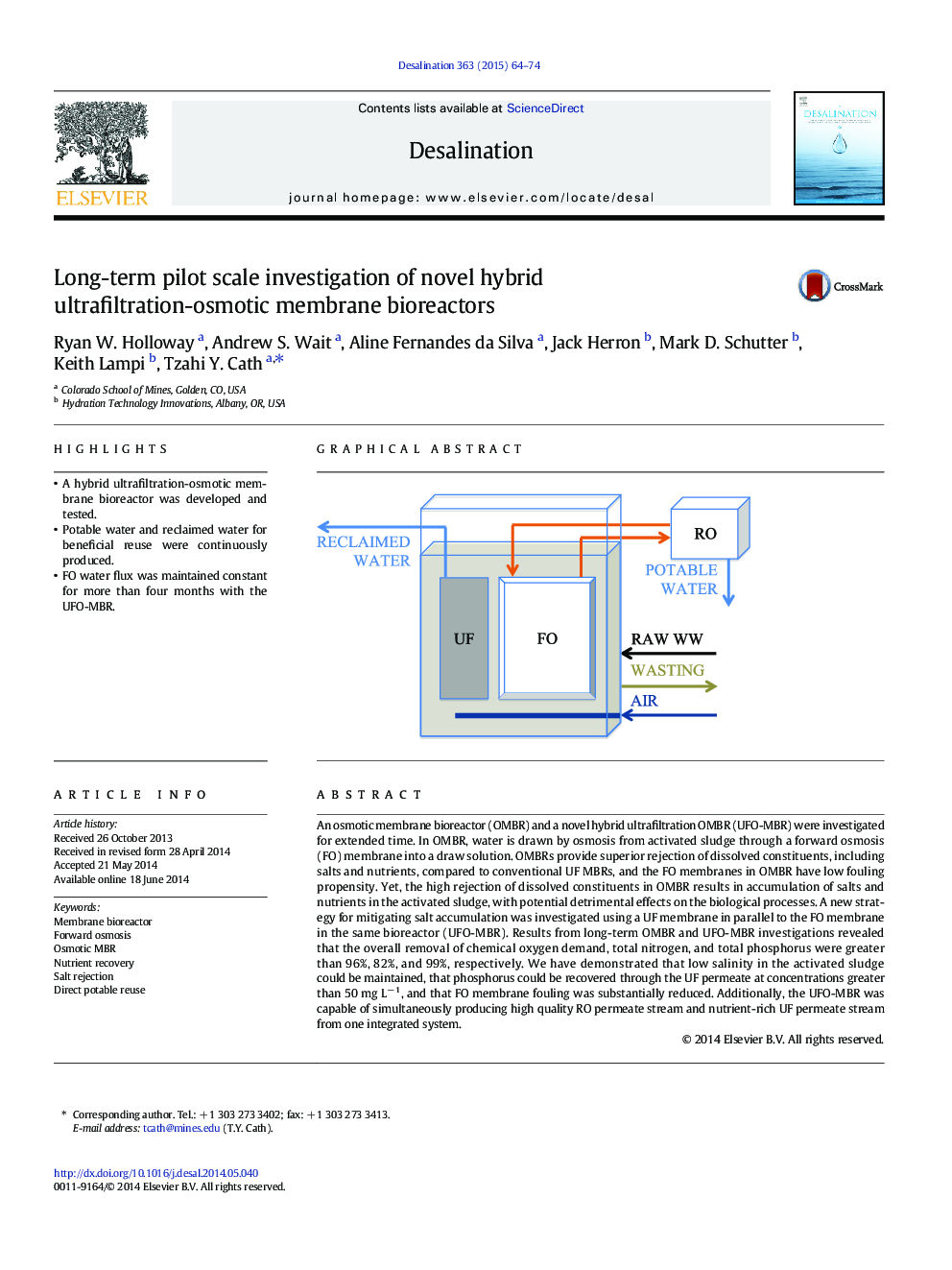| Article ID | Journal | Published Year | Pages | File Type |
|---|---|---|---|---|
| 623119 | Desalination | 2015 | 11 Pages |
•A hybrid ultrafiltration-osmotic membrane bioreactor was developed and tested.•Potable water and reclaimed water for beneficial reuse were continuously produced.•FO water flux was maintained constant for more than four months with the UFO-MBR.
An osmotic membrane bioreactor (OMBR) and a novel hybrid ultrafiltration OMBR (UFO-MBR) were investigated for extended time. In OMBR, water is drawn by osmosis from activated sludge through a forward osmosis (FO) membrane into a draw solution. OMBRs provide superior rejection of dissolved constituents, including salts and nutrients, compared to conventional UF MBRs, and the FO membranes in OMBR have low fouling propensity. Yet, the high rejection of dissolved constituents in OMBR results in accumulation of salts and nutrients in the activated sludge, with potential detrimental effects on the biological processes. A new strategy for mitigating salt accumulation was investigated using a UF membrane in parallel to the FO membrane in the same bioreactor (UFO-MBR). Results from long-term OMBR and UFO-MBR investigations revealed that the overall removal of chemical oxygen demand, total nitrogen, and total phosphorus were greater than 96%, 82%, and 99%, respectively. We have demonstrated that low salinity in the activated sludge could be maintained, that phosphorus could be recovered through the UF permeate at concentrations greater than 50 mg L− 1, and that FO membrane fouling was substantially reduced. Additionally, the UFO-MBR was capable of simultaneously producing high quality RO permeate stream and nutrient-rich UF permeate stream from one integrated system.
Graphical abstractFigure optionsDownload full-size imageDownload as PowerPoint slide
